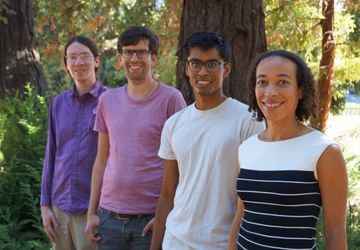Biophysics

Applying techniques from physics to biological measurements and understanding the relationship between structure and function in biological systems. Protein folding, biochemical reactions, imaging, DNA sequencing. Theoretical work developing models in statistical and mathematical physics to understand aspects of population genetics and eco-evolutionary dynamics.
Biophysics at Stanford is pursued across a range of departments and schools, including Physics, Applied Physics and Bioengineering. Graduate students can apply to any of these departments, or to the Stanford Biophysics Program, which is an interdisciplinary, interdepartmental program. Undergraduates can pursue a Physics major with a concentration in biophysics, or an Engineering Physics major with a specialty in biophysics.
Research in biophysics at Stanford includes the development of new computational and experimental tools to tackle the de novo modeling of protein and RNA folds, the high-throughput structure mapping of riboswitches and random RNAs, and the design of self-knotting and self-crystallizing nucleic acids; x-ray scattering on biological molecules to relate structure to function using SSRL and LCLS at SLAC and the APS at Argonne National Lab; theoretical work on application of the Fokker-Planck equation to biochemical reactions and on modification of the Poisson-Boltzmann equations for calculation of thermodynamic quantities for DNA and RNA; the development of advanced positron emission tomography and other imaging modalities; the development of artificial sight and techniques based on laser-tissue interactions; and the application of measurement techniques from physics and the development of technology to improve biological measurements, including micro-fluidic large scale integration and ultra high throughput DNA sequencing technology. It also includes theoretical studies of population genetics and eco-evolutionary dynamics.
Related Faculty
Related News

From left, Eric Cooper, Philipp Kunkel, Avikar Periwal and Monika Schleier-Smith.
(Image credit: Khoi Huynh)
In a new study, Stanford researchers demonstrate how to manipulate…


